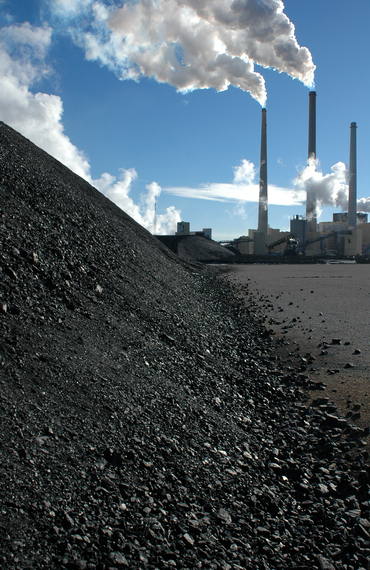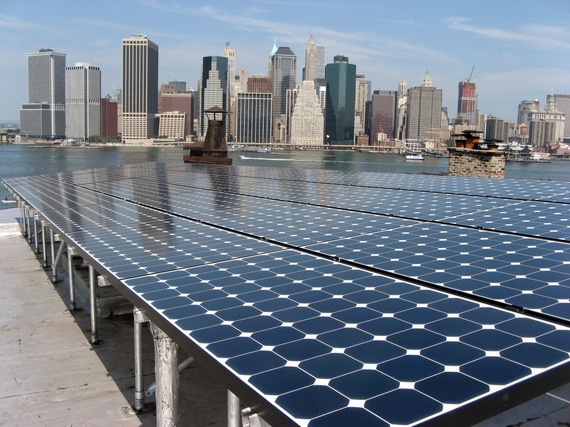Credit: Stockxchange
This week, as the world's most polluting nations issued pledges to cut emissions and increase renewable energy, attention turned to climate talks scheduled this December in Paris, where an international agreement will be forged.
In anticipation of those talks, Environment America researchers, together with the Frontier Group, put out a report documenting U.S. progress to date in curbing carbon pollution. The results show that America is ready to lead by example when it comes to climate action.
Even in the face of stiff resistance from fossil fuel interests and their congressional allies, state and federal policies are poised to cut U.S. carbon emissions by 1.1 billion tons, or 27 percent, in the next decade. Here are the nation's five big steps on the path to leadership in Paris:
1. The Clean Power Plan, the first-ever federal limits on carbon pollution from power plants: America has dozens of dirty, aging power plants that make a disproportionate contribution to global warming and spew pollution that makes Americans sick. If our power plants alone were a nation in and of themselves, they'd rank third behind China and the U.S. as a whole for total carbon pollution. The Clean Power Plan requires a 30-percent cut in carbon dioxide emissions by 2030 and represents the largest step we've ever taken as a nation to curb greenhouse gases.
Credit: iStockphoto/Andy Olsen
2. State and regional caps on carbon pollution: The U.S. federal government has thus far failed to set enforceable, economy-wide limits on emissions of global warming pollution. But seven U.S. states have. Together, these states -- California, Connecticut, Hawaii, Maryland, Massachusetts, New Jersey and Rhode Island -- could cut global warming pollution by as much as 242 million metric tons. Through the Regional Greenhouse Gas Initiative, nine Mid-Atlantic and Northeastern states have also capped carbon pollution from power plants.
3. More-efficient appliances and buildings: Nearly two thirds of America's carbon pollution comes from energy use in our homes, businesses and factories. Much of that energy is wasted through air leaks and the use of outdated, inefficient equipment. Over the last decade, states and the federal government have adopted a variety of policies to improve the efficiency of our buildings and appliances -- from updated building codes at the state level to efficiency standards for appliances at the federal level.
Credit: iStockphoto/chones
4. More-efficient cars, trucks, and buses: By 2025, Americans will be driving cars that go more than twice as far on a gallon of gas as the cars made a generation ago, thanks to new national clean car standards that followed years of leadership by the states. For the first time, miles-per-gallon standards now also apply to buses, delivery trucks and other large vehicles, whose efficiency had long gone completely unregulated.
5. More clean, renewable energy: Renewable energy is on the rise across the United States. Enough wind energy exists in the country to power 18 million homes. Last year another home or business went solar every two and a half minutes. The recent growth spurt in wind and solar power is in large part due to federal tax credits and laws requiring clean energy in 28 states and Washington, D.C.
Credit: NREL
Taken together, the policies requiring clean energy, energy efficiency, and less pollution put the U.S. within striking distance of its pledge to cut all global warming emissions by 26 to 28 percent by 2025.
Since our report was produced, state governments and federal officials have made even more strides in curbing emissions. California legislative leaders are poised to enact laws to achieve a 40-percent cut in global warming pollution. New York just finalized plans for similar reductions. Hawaii will require 100-percent renewable energy before midcentury. And the Obama administration has announced a draft rule to make further efficiency gains for large trucks and buses.
As many observers have noted, so far the pledges made by the U.S. and other polluting nations are necessary, but far from sufficient, to avoid a global temperature increase of 2 degrees Celsius -- a benchmark scientists say is critical to avoid devastating climate impacts.
Yet the progress the U.S. is making is remarkable, especially in the face of a Congress largely held hostage by climate deniers and polluting interests. With broad, bipartisan support from the public and the backing of state and local elected leaders, the Obama administration should build on that progress, in Paris and beyond, to ensure the pollution reductions necessary to protecting the health of our climate and our kids' future.




